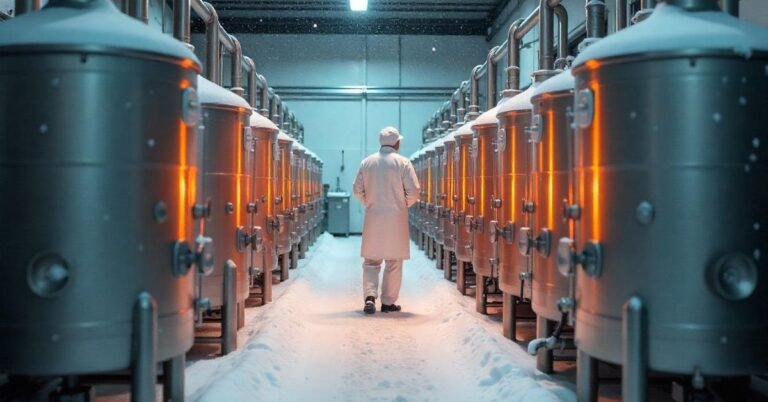Introduction
In today’s world of rapid industrial innovation, the demand for precise, efficient, and scalable processing equipment has never been greater. As industries like pharmaceuticals, chemicals, and food manufacturing push toward smarter and more integrated production lines, the role of advanced process vessels becomes increasingly crucial. Among the innovations making waves in this sector is a system known as Stampnik APV—an advanced solution reshaping how industries manage processing tasks.
While the market for processing vessels is diverse and competitive, technologies that prioritize automation, hygiene sanitary, and flexibility are leading the charge. This article explores the significance of advanced process vessels in modern production, with a particular spotlight on how smart features, modular designs, and compliance with regulatory standards are transforming operations globally.
The Role of Process Vessels in Modern Industry
Process vessels are essential equipment used for mixing, heating, cooling, and chemically processing materials in liquid or semi-liquid form. Depending on the industry, these vessels must meet a range of requirements: high precision, temperature control, pressure resistance, and compliance with sanitary standards.
From blending pharmaceutical ingredients to fermenting biological compounds or emulsifying cosmetic formulations, the core purpose of a process vessel is to enable repeatable, controlled environments that ensure consistency and safety.
But today’s industrial environments aren’t just about containment—they demand intelligence and interconnectivity. That’s where advanced process vessels, such as those offered in systems like Stampnik APV, truly shine.
Smart Integration and Automation: The Future of Processing
Traditional tanks or vessels once required manual control and constant human oversight. In contrast, modern APV systems incorporate smart sensors, automated process control, and real-time monitoring. These systems connect seamlessly with larger Manufacturing Execution Systems (MES) or Enterprise Resource Planning (ERP) software, giving manufacturers unprecedented insight into their processes.
For example, a modern vessel system may include:
- PLC-based control systems that automate mixing cycles and adjust temperatures or pressures in real-time.
- CIP (Clean-in-Place) and SIP (Sterilize-in-Place) functionalities that reduce downtime and improve hygiene compliance.
- Batch traceability features that ensure every product lot is documented and auditable—a must in pharmaceutical and food industries.
With such features, systems like Stampnik APV empower plant operators to achieve higher yields with less waste, reduce human error, and improve product quality consistency.
Design Advantages That Support Innovation
One of the most valuable aspects of any advanced process vessel is its adaptability. With global industries requiring both standardization and customization, modular designs have emerged as a practical solution.
Stampnik APV systems, for example, often offer:
- Scalable modularity, allowing businesses to expand capacity without full system replacements.
- ASME- and GMP-compliant materials, ensuring vessels can be used in highly regulated industries.
- Advanced mixing technologies, such as jet mixing, magnetic agitation, or bottom-entry stirrers for delicate compounds.
Beyond technical performance, design elements also factor in operator safety, energy efficiency, and environmental considerations. Noise reduction, reduced heat loss, and improved ergonomic controls contribute to safer and greener production floors.
Applications Across Critical Industries
The versatility of automated process vessels makes them valuable in numerous sectors sanitary:
1. Pharmaceuticals & Biotech
Precision and sterility are non-negotiable in this field. Vessels must adhere to FDA, EU GMP, and USP standards. Smart APV systems ensure consistent product quality, batch traceability, and contamination prevention.
2. Food & Beverage
Here, taste, texture, and hygiene define success. Automated vessels support repeatable recipes while complying with HACCP and 3-A standards. Features like rapid heating/cooling cycles are ideal for sauces, dairy, and beverage production.
3. Chemical Processing
Corrosive materials and volatile reactions require high-performance materials and tight process control. APV systems using pressure-rated and jacketed vessels support safe, scalable operations.
4. Cosmetics & Personal Care
Mixing emulsions for creams, lotions, and serums demands exact temperature control and smooth shearing action—areas where APV vessels excel.
Compliance, Safety, and Global Standards
Global industries must meet varying local and international regulations. Whether it’s ISO 9001, ASME Section VIII, or cGMP compliance, APV systems are increasingly designed with built-in features to support certifications and audits.
Moreover, the built-in safety protocols—automatic shut-off valves, pressure release systems, and real-time error alerts—help reduce accident risk and comply with workplace safety laws.
Stampnik APV, in particular, represents a system that not only meets these requirements but also anticipates future compliance trends through software updates and modular hardware expansion sanitary.
The Digital Twin Advantage
One of the most forward-thinking elements in modern APV systems is the integration of digital twin technology. This involves creating a virtual replica of the physical vessel and its processes sanitary.
Operators can:
- Simulate process changes before implementation.
- Monitor wear-and-tear in real time.
- Predict failures or bottlenecks using machine learning.
Such innovation minimizes downtime and supports continuous improvement initiatives in line with Industry 4.0 principles.
Sustainability and Efficiency
Today’s manufacturers are under pressure to reduce energy consumption and carbon emissions. Modern APV systems support sustainability in several ways:
- Heat recovery systems reduce energy costs.
- Optimized CIP cycles reduce water and chemical usage.
- Precise dosing and mixing reduce raw material waste.
These advantages not only support environmental goals but also lead to long-term cost savings—making them an attractive investment for CFOs and sustainability officers alike.
Conclusion
As industrial sectors advance into an era of smart factories, automation, and eco-conscious production, the need for innovative and reliable processing equipment becomes ever more pressing. Systems like Stampnik APV represent a new generation of process vessels that combine intelligence, safety, and versatility.
Whether it’s pharmaceutical manufacturing or high-volume food processing, advanced process vessels empower businesses to scale smarter, stay compliant, and meet the evolving demands of their industries. For organizations seeking to future-proof their operations, investing in advanced vessel systems isn’t just a trend—it’s a strategic necessity.
